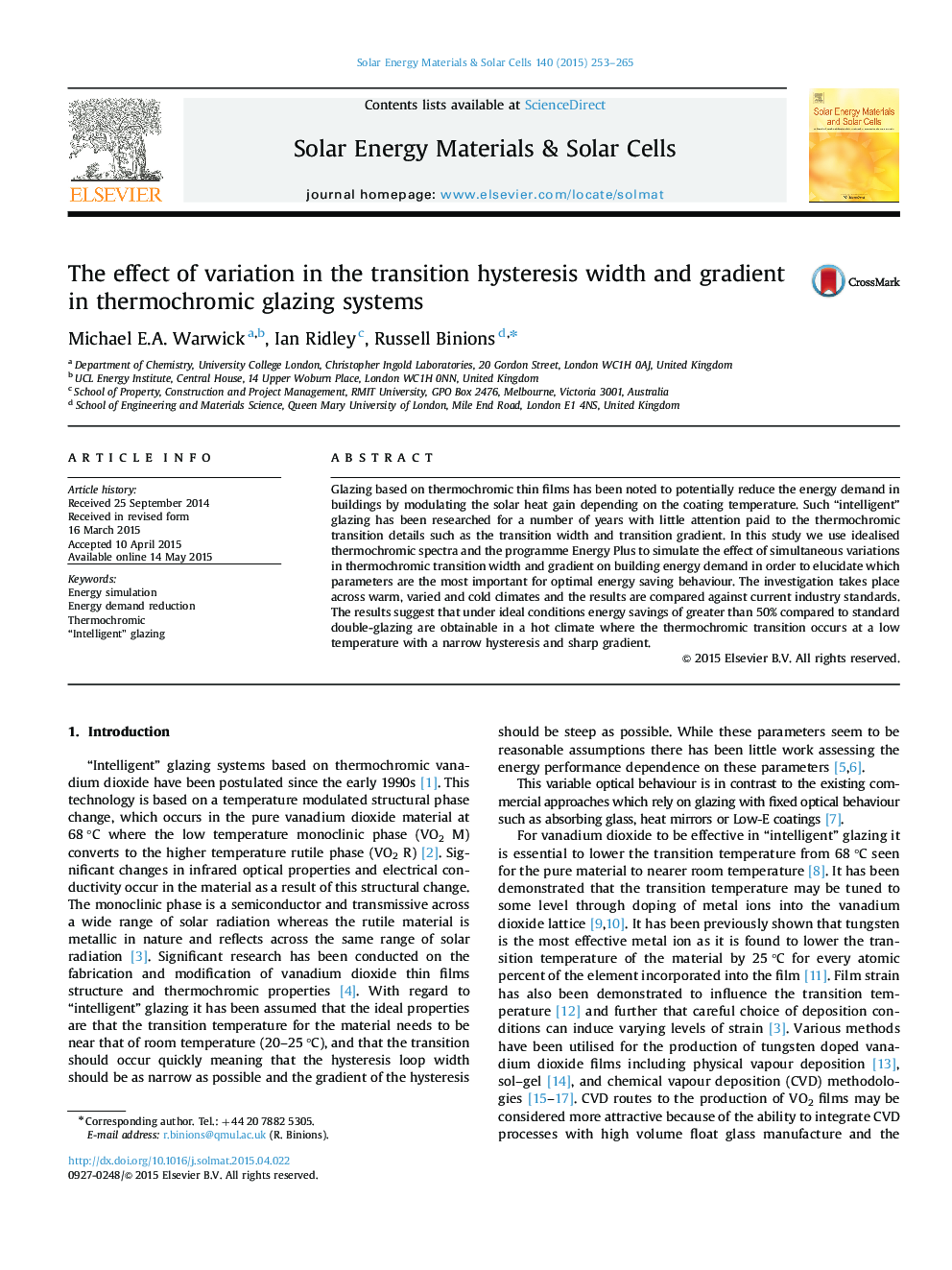| Article ID | Journal | Published Year | Pages | File Type |
|---|---|---|---|---|
| 6535185 | Solar Energy Materials and Solar Cells | 2015 | 13 Pages |
Abstract
Glazing based on thermochromic thin films has been noted to potentially reduce the energy demand in buildings by modulating the solar heat gain depending on the coating temperature. Such “intelligent” glazing has been researched for a number of years with little attention paid to the thermochromic transition details such as the transition width and transition gradient. In this study we use idealised thermochromic spectra and the programme Energy Plus to simulate the effect of simultaneous variations in thermochromic transition width and gradient on building energy demand in order to elucidate which parameters are the most important for optimal energy saving behaviour. The investigation takes place across warm, varied and cold climates and the results are compared against current industry standards. The results suggest that under ideal conditions energy savings of greater than 50% compared to standard double-glazing are obtainable in a hot climate where the thermochromic transition occurs at a low temperature with a narrow hysteresis and sharp gradient.
Related Topics
Physical Sciences and Engineering
Chemical Engineering
Catalysis
Authors
Michael E.A. Warwick, Ian Ridley, Russell Binions,
